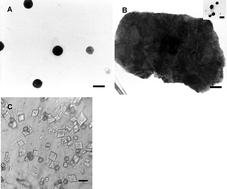Self-aggregation behaviour of novel thiosemicarbazonedrug candidates with potential antiviral activity†
Abstract
The present work aimed to gain further insight into the mechanisms governing the aggregation process of ![[double bond, length as m-dash]](https://www.rsc.org/images/entities/char_e001.gif) S
S

* Corresponding authors
a
The Group of Biomaterials and Nanotechnology for Improved Medicines (BIONIMED), Department of Pharmaceutical Technology, Faculty of Pharmacy and Biochemistry, University of Buenos Aires, 956 Junín St., 6th Floor, Buenos Aires CP1113, Argentina
E-mail:
alesosnik@gmail.com
Fax:
Tel: +54-11-4964-8273
b Department of Pharmacology, Faculty of Pharmacy and Biochemistry, University of Buenos Aires, Buenos Aires CP1113, Argentina
c National Science Research Council (CONICET), Buenos Aires, Argentina
The present work aimed to gain further insight into the mechanisms governing the aggregation process of ![[double bond, length as m-dash]](https://www.rsc.org/images/entities/char_e001.gif) S
S

 Please wait while we load your content...
Something went wrong. Try again?
Please wait while we load your content...
Something went wrong. Try again?
R. J. Glisoni, D. A. Chiappetta, L. M. Finkielsztein, A. G. Moglioni and A. Sosnik, New J. Chem., 2010, 34, 2047 DOI: 10.1039/C0NJ00061B
To request permission to reproduce material from this article, please go to the Copyright Clearance Center request page.
If you are an author contributing to an RSC publication, you do not need to request permission provided correct acknowledgement is given.
If you are the author of this article, you do not need to request permission to reproduce figures and diagrams provided correct acknowledgement is given. If you want to reproduce the whole article in a third-party publication (excluding your thesis/dissertation for which permission is not required) please go to the Copyright Clearance Center request page.
Read more about how to correctly acknowledge RSC content.
 Fetching data from CrossRef.
Fetching data from CrossRef.
This may take some time to load.
Loading related content
